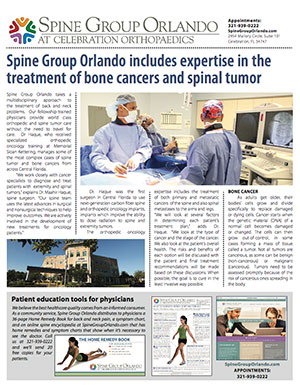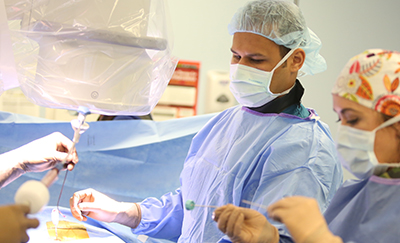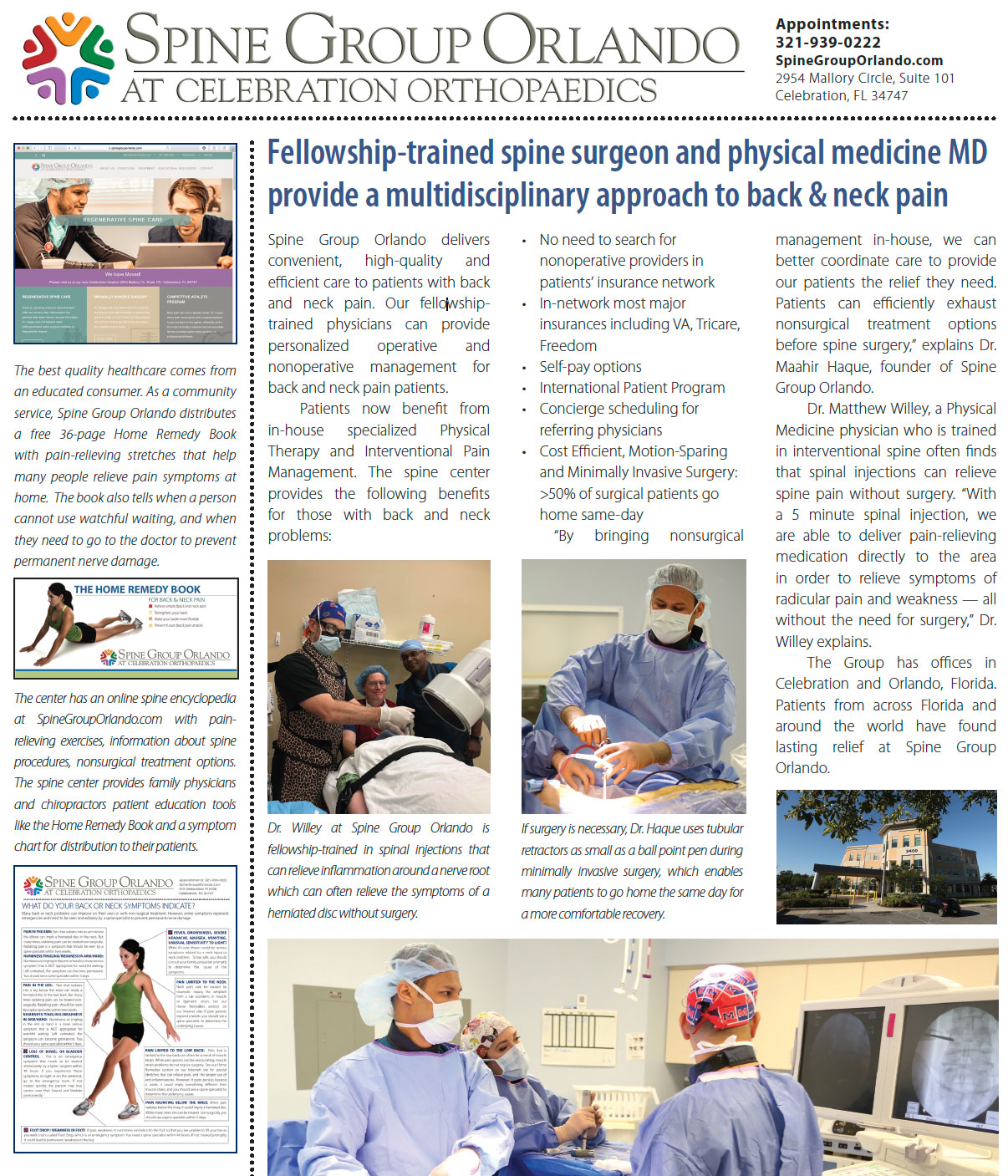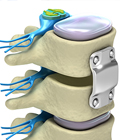 Spinal Cord Stimulator
Spinal Cord Stimulator
Overview | Stimulator Placement | Am I a Candidate? | Risks and Complications | Post surgery
Overview
Spinal cord stimulation helps to relieve chronic pain of the back, arms and legs. The main purpose implanting a spinal cord stimulator is to help a patient manage pain without ongoing dependence on narcotics that can damage internal organs and shorten lifespan.
A spinal cord stimulator is used when nonsurgical pain treatment options have failed to provide pain relief. It is an implanted device that sends low levels of electricity directly into the spinal cord to relieve pain.
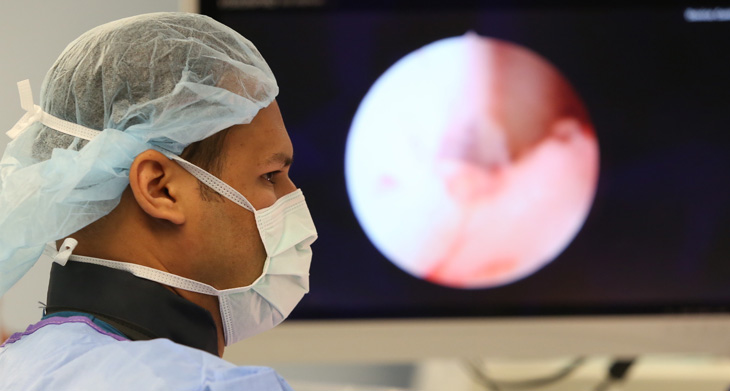 Placement of a spinal cord stimulator consists of electrical leads and a battery. Placement of the stimulator requires two separate incisions. One in the mid- back, and one in the region above the buttock.
Placement of a spinal cord stimulator consists of electrical leads and a battery. Placement of the stimulator requires two separate incisions. One in the mid- back, and one in the region above the buttock.
Spinal cord stimulators are generally indicated for patients with back and leg pain that has failed other methods of pain control and had a successful spinal cord stimulator trial. Most patients have had back surgery in the past, and others may have other chronic pain syndromes.
Stimulator Placement
Placement of a spinal cord stimulator consists of electrical leads and a battery. Placement of the stimulator requires two separate incisions. One in the mid-back, and one in the region above the buttock. Once the incision in the back has been made a small portion of bone is removed, exposing the spinal cord. The spinal cord stimulator leads are then placed under the bone, directly on the surface of the spinal cord. The leads are then passed under the skin to the region above the buttock where they are connected a battery.
Spinal Cord Stimulation for Pain: Am I a Candidate?
Spinal cord stimulators are generally indicated for patients with back and leg pain that has failed other methods of pain control and had a successful spinal cord stimulator trial. Most patients have had back surgery in the past, and others may have other chronic pain syndromes.
Risks and Possible Complications
As with any surgery, there are small, but possible complications. For spinal cord stimulators these include:
- Weakness, numbness, new or worse pain
- Paralysis
- Blood clots in the legs or lungs
- Infection requiring spinal cord stimulator removal
- Bleeding
- Malposition of the spinal cord stimulator lead
- Spinal cord stimulator lead migration
- Persistent pain despite placement of the spinal cord stimulator
There Are 4 Possible Outcomes From Any Surgery
- Your symptoms or pain may be completely improved.
- Your symptoms or pain may be partially improved.
- Your symptoms or pain may be the same as before surgery.
- Your symptoms or pain may be worse than before surgery.
After Surgery
You may have some soreness at the incision site immediately after surgery and will be encouraged to rest. However, you will be encouraged to walk the next day.
- After surgery, patients usually stay overnight.
- Risks of the procedure are bleeding, infection, lead migration spinal cord injury (which may cause leg weakness, numbness and difficulty walking), failure to relieve pain.
- The stimulator is usually turned on 2 weeks after surgery.
- Patients are encouraged not to perform any twisting, bending, or heavy lifting for 3 weeks. This allows the stimulator to settle in place.
[top]
Maahir Haque, MD is recognized as a leader in the field of minimally invasive spine surgery. At Spine Group Orlando, Dr. Maahir Haque also provides second opinions for spine surgery and MRI reviews for those with back pain and neck pain. Dr. Haque emphasizes non-surgical options for back pain and neck pain where possible. This can include accessing a back pain specialist with expertise in pain-relieving spinal injections and spine therapists. Spine therapy can include back stretches that can be a future home remedy for back pain or neck pain. If spine surgery is necessary because of a herniated disc, spinal fracture, or spinal stenosis, Dr. Maahir Haque operates through tubular retractors that reduce the size of the incision, lessen blood loss, reduce time in the hospital, speed return to activity with a less painful recovery. This spine surgery expertise enables many patients to have outpatient spine surgery and be home the same day. Spine Group Orlando and Dr. Maahir Haque provides artificial disc replacement in the neck using the Mobi-C disc implant, the first FDA-approved disc for multiple levels in the neck. Prodisc-C is also used for artificial disc replacement in the cervical spine. Dr. Haque is also one of the few spine surgeons in Orlando, Florida to provide lumbar artificial disc replacement using the Prodisc-L artificial disc. Dr. Haque is also referred patients from across Orlando and north central Florida for artificial disc replacement surgery as an alternative to spinal fusion. Accordingly, Dr. Haque's patients travel from across north central Florida, including: Orlando; Jacksonville; Tallahassee; Lakeland; Gainesville; Tampa; Daytona Beach; and Cocoa Beach. The spine center, as a destination for medical tourism for some international patients from Mexico and the Caribbean, can provide recommendations to out-of-town patients on nearby hotels and tourist attractions. Dr. Haque is featured on the national site CentersforArtificialDisc.com as an author on the subject of artificial disc replacement for herniated discs in the neck. The Centers for Artificial Disc web site has content specific to disc replacement options and alternatives to spinal fusion. Click here to visit the Centers for Artificial Disc.

